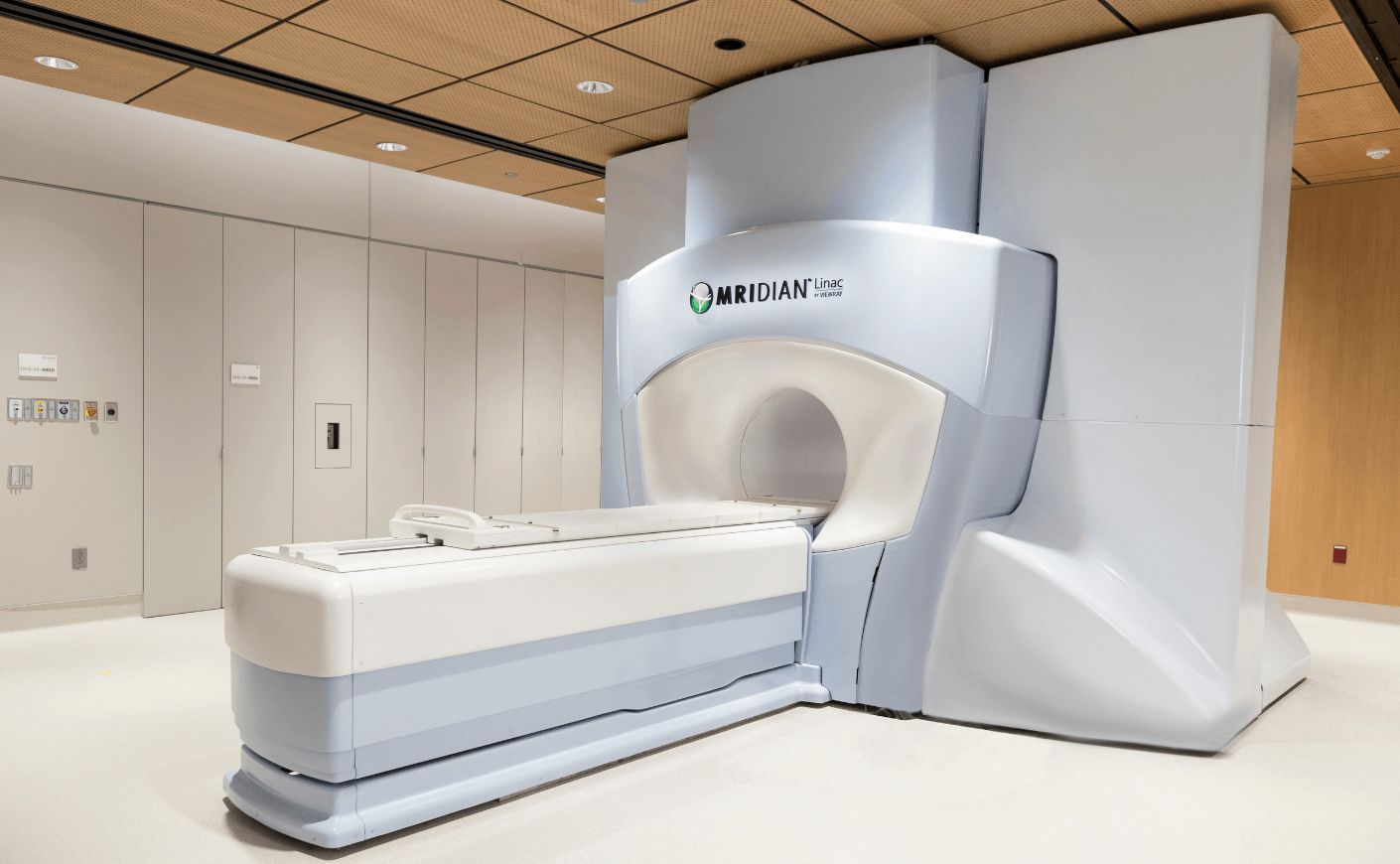“You have cancer,” are three devastating words no one ever wants to hear from their doctor. Unfortunately, that’s a reality that many patients and their families face each year: In the U.S. alone, more than 1.7 million new cancer cases were reported in 2019. And cancer knows no bounds — it affects every age, gender, race, economic level, and nationality.
For men who are diagnosed, prostate cancer is the most common: About one in eight men will battle this type of cancer during their lifetime. The good news is that with effective treatment and early detection, your chances of walking away prostate-cancer-free are definitely higher.
But what’s the right treatment for you? If you or a loved one has ever grappled with a prostate cancer diagnosis, then you know that the myriad options can send you spiraling. Should you undergo surgery to remove your prostate, or get radiation? What types of radiation are available? What will the side effects be? Will it be painful? Will you be cured?
Thankfully, our friends at ViewRay are working to make treatment decisions easier. Initial data from a randomized, controlled clinical trial independently led by UCLA found that ViewRay’s radiation technology, called MRIdian SMART, can precisely target prostate cancer, leaving patients heading out of the doctor’s office cancer-free after just five visits and with fewer of the common side effects, like poor bladder function or injury to the rectum.
It’s one of the biggest breakthrough in prostate cancer treatment in two decades.
How does MRIdian technology work?

MRIdian is an MRI and radiation therapy machine in one that can precisely target prostate cancer in real-time. How? Doctors use the MRI capability of the machine to control the radiation beam so that it only hits the tumor, preventing surrounding healthy tissue and organs from being damaged. This allows the doctor to more accurately pinpoint exactly where to send the radiation beams, making MRIdian an extraordinarily precise option for radiation therapy.
On MRIdian, the MRI controls the radiation beam and allows doctors to see inside the body in real-time
With traditional radiation therapy, the hope is that nothing in the body moves before the doctors send radiation to the prostate. That’s because they’re looking at an image of the area taken before treatment starts. But we’re human: If your body produces gas, or your bladder fills with urine, the prostate can shift, which means the radiation beam could accidentally hit the wrong area, like the rectum and bladder, causing unwanted side effects like erectile dysfunction or painful urination.
“If the prostate moves, the MRIdian machine actually recognizes that and shuts the beam off,” says Himanshu Nagar, M.D., a radiation oncologist at Weill Cornell Medicine in New York. “In traditional radiation treatment, you take an image before you treat the patient, and that imaging is generally based on CAT scan imaging, which doesn’t have the soft-tissue visibility that MRI does — so you don’t truly have real-time imaging while you’re treating.”
That’s why MRIdian machines are game-changing. When the tumor or nearby healthy tissue abruptly changes position, MRIdian’s real-time tissue tracking and automated beam control instantly reacts, faster than human reaction time, and automatically turns the radiation beam off. Likewise, when the tumor returns to the correct position, the radiation beam is automatically turned back on.
New data shows that MRIdian results in reduced (and in some cases, zero) side effects
The goal of the UCLA study was to compare traditional CAT-scan-based radiation therapy to the newer MRIdian technology, on 100 prostate cancer patients. And the initial results were groundbreaking: Patients treated with MRIdian had reduced (or no) side effects through shorter treatments.
“At this time, we only have data on side effects within 90 days of treatment. Within that time, MRIdian reduced urinary side effects by about 60 percent and eliminated bowel toxicities altogether,” says Martin Fuss, MD, PhD, and Chief Medical Officer at ViewRay. “That’s relevant not only because it’s more comfortable for the patients in the short-term, but also because early side effects often precede developing or permanent issues with urination or bowel function.”
You may only need 5 treatments, instead of 45
Traditional forms of radiation therapy typically had patients visiting their doctors anywhere from 30 to 45 times to complete radiation. That’s a lot of travel, time, and energy. But with the new MRIdian technology, doctors have the ability to deliver cancer-free results for prostate patients in as few as 5 visits across 10 days.
Plus, fewer visits for patients allow doctors who use MRIdian to treat more patients. “Every fraction counts, in terms of getting as many patients treated as possible,” says Dr. Nagar. “If you’re done in five treatments, you can bring on the next patient, and the next.”
Will MRIdian become the future standard of prostate cancer treatment?
It’s common for us to ask our doctors how they’d go about treating themselves, or someone they love, if they were diagnosed with prostate cancer. “Patients ask us, ‘What would you do? Or what would you do for your father or your brother?'” says Dr. Nagar. “[MRI treatment] is the first thing I’d do, and there would have to be a very compelling reason to not [choose it].”
Some patients have a pacemaker that’s not compatible with MRI machines, Dr. Nagar explains. “Probably only one out of 50 pacemakers wouldn’t be compatible. But some men have actually changed their device in order to get this treatment, because that’s a simple thing to do.”
“Our goal is to get patients more access to this treatment,” says Dr. Nagar, “so they can get these kinds of side-effect profiles and decrease the burden on them and their family members.”
For a list of hospitals currently using MRIdian, please click here.
The information in this article or in any of the links provided are not intended as medical advice and do not replace professional medical treatment. Results discussed in this article are not predictive of future results, as results may vary depending on a variety of patient-specific attributes and related factors. Always seek the advice of a qualified healthcare provider with any questions regarding a medical condition or treatment.









